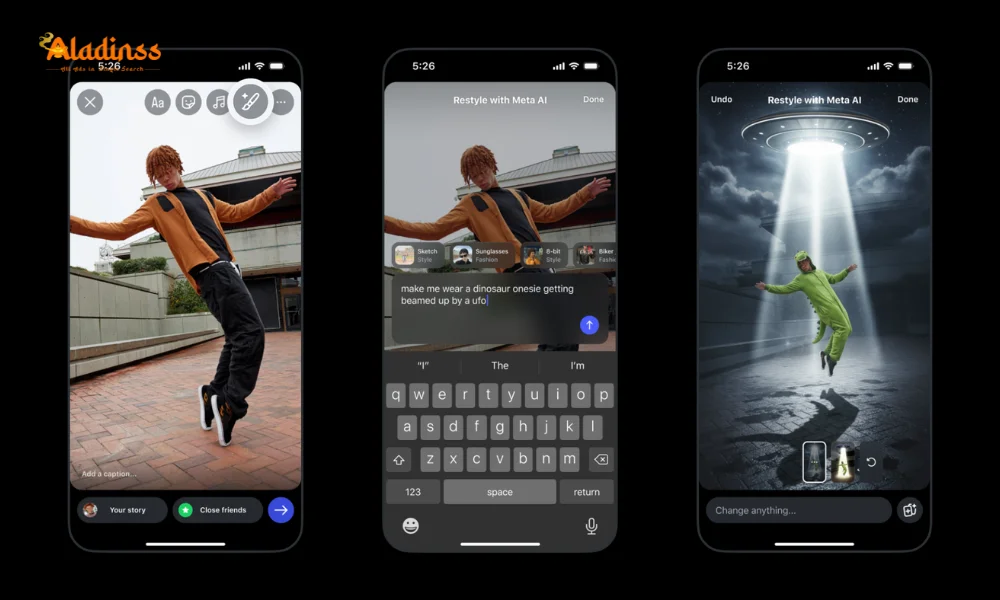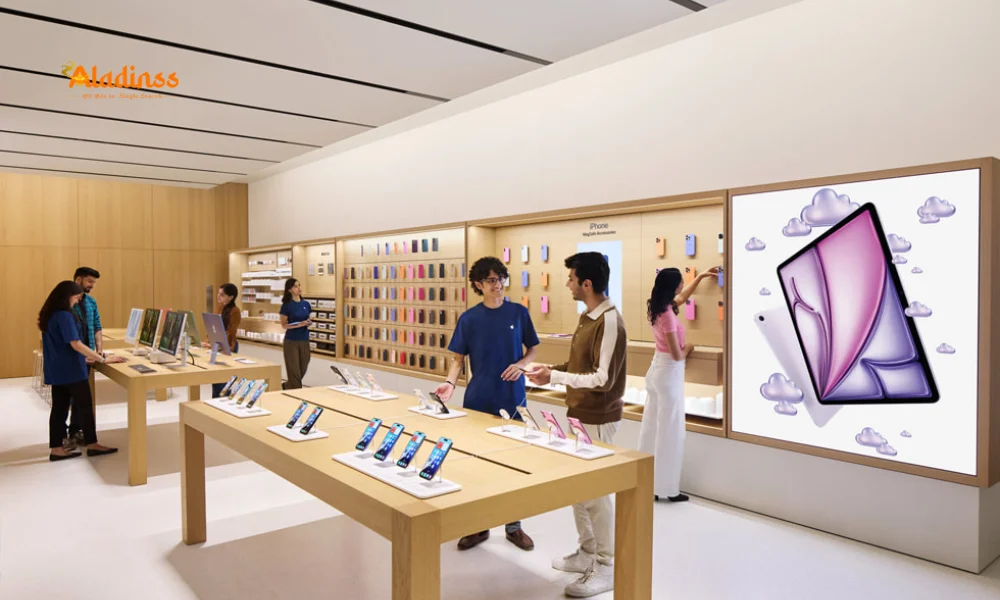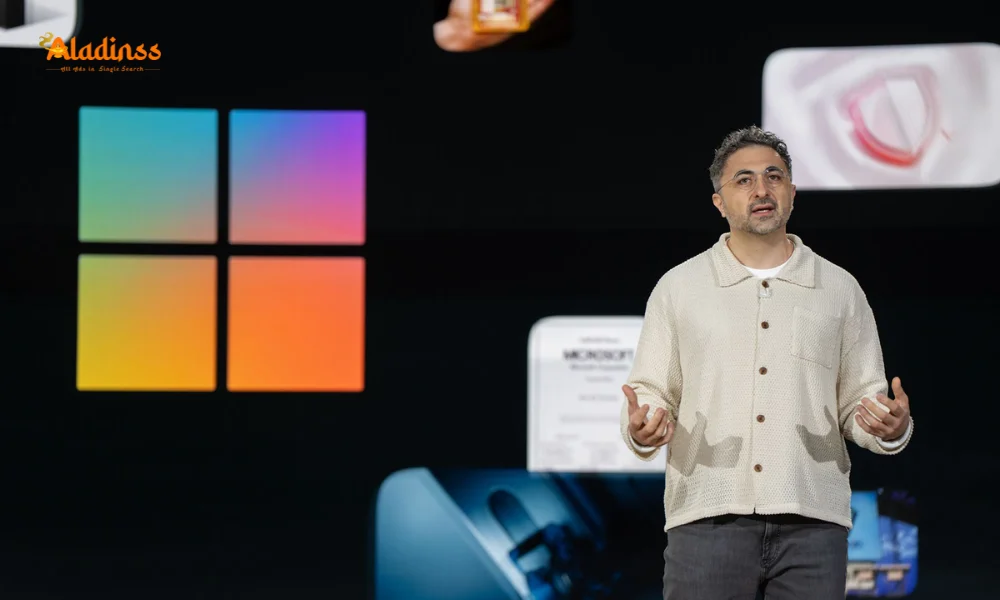HyperOS 3 Update Release Timeline Revealed: Xiaomi 15 Ultra, Redmi K80 Pro Among First Phones to Get Android 16 OS
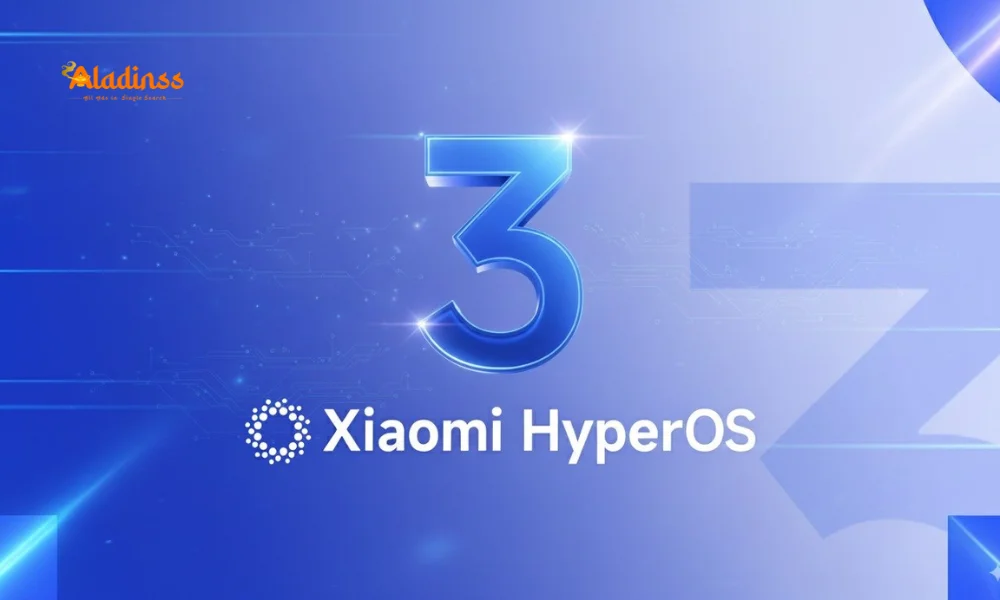
HyperOS 3 Update Release Timeline Revealed: Xiaomi 15 Ultra, Redmi K80 Pro Among First Phones to Get Android 16 OS — Breaking News September 22, 2025

Xiaomi has unveiled the official release timeline for its highly anticipated HyperOS 3 update, built on Android 16, marking a significant leap in software capabilities for its vast ecosystem of devices. Starting mid-October 2025, flagship smartphones like the Xiaomi 15 Ultra and Redmi K80 Pro will be among the first to receive this stable rollout, promising enhanced performance, smarter AI integrations, and a refreshed user interface. This announcement comes as Xiaomi prepares to launch the Xiaomi 17 series on September 25, which will ship with HyperOS 3 out of the box, setting the stage for widespread adoption across China and eventually global markets.
The HyperOS 3 update represents Xiaomi's commitment to delivering seamless cross-device experiences, extending beyond smartphones to tablets, smartwatches, TVs, and foldables. With features like the innovative Super Island for real-time notifications and a 30 percent boost in system efficiency, this OS iteration aims to rival premium interfaces from competitors while maintaining affordability. As beta testing wraps up, the stable version's phased rollout ensures minimal disruptions, allowing users to upgrade progressively through early 2026.
HyperOS 3 Update Release Timeline: Key Dates and Devices
The rollout kicks off on October 15, 2025, prioritizing Xiaomi's latest flagships to showcase the OS's full potential. Devices such as the Xiaomi 15 Ultra, Xiaomi 15S Pro, Xiaomi 15 Pro, Xiaomi 15, Redmi K80 Pro, and Redmi K80 Extreme Edition will receive push notifications for the update, enabling immediate installation. This early access allows power users to experience Android 16's native features, including improved privacy controls and battery optimizations, tailored through HyperOS's custom skin.
By October 31, the update expands to include the MIX Flip 2 foldable, Civi 5 Pro mid-ranger, and Redmi K80, alongside ecosystem products like the Pad 7 series, Redmi K Pad, TV S Pro Mini LED 2025 series, and Watch S4 lineup. This broader wave ensures that productivity tools on tablets and health tracking on watches benefit from AI-driven enhancements, such as real-time translation and contextual suggestions.
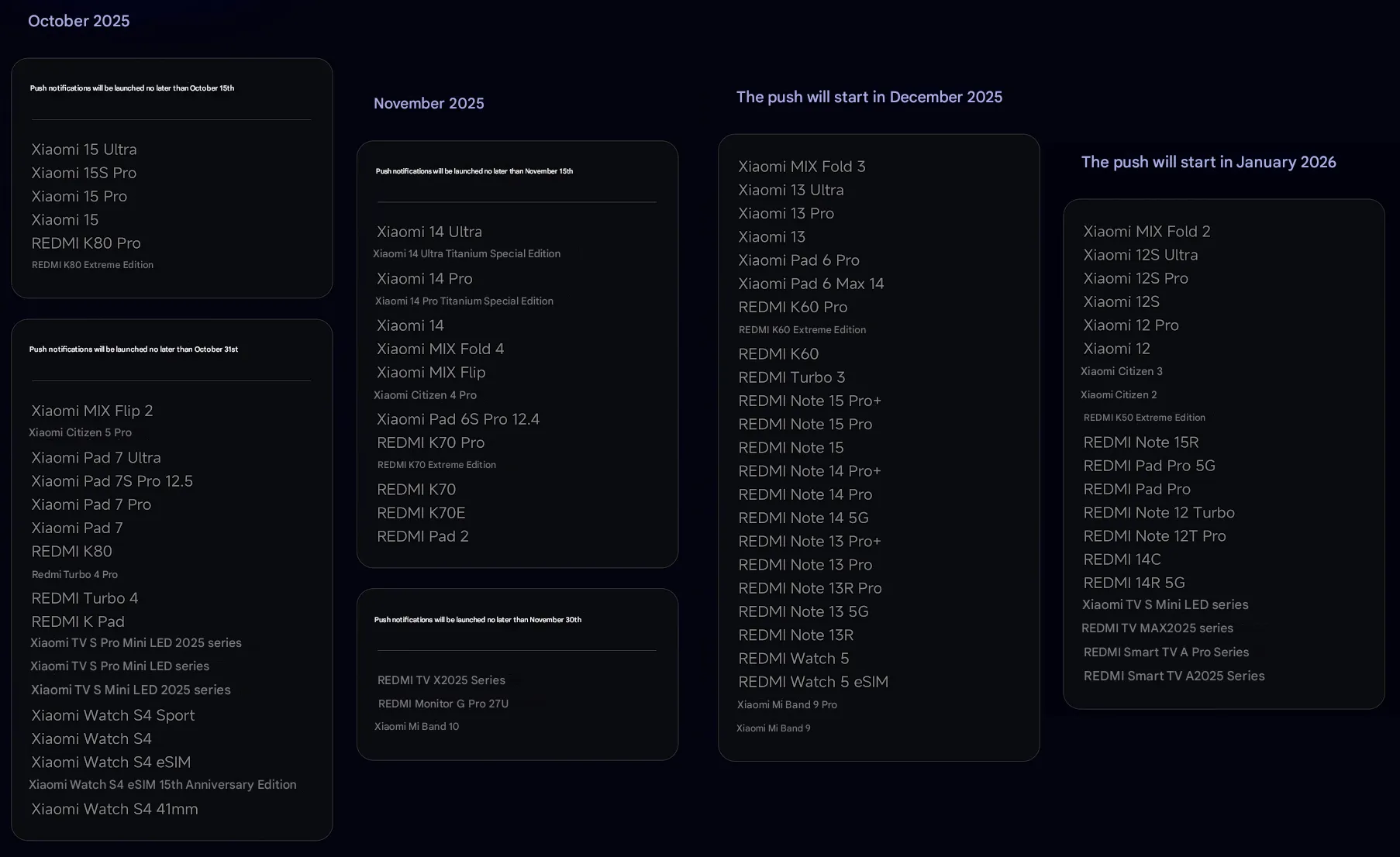
November brings further inclusivity, with the Xiaomi 14 series—including the 14 Ultra and Titanium variants—along with MIX Fold 4, MIX Flip, and Civi 4 Pro joining on November 15. Mid-range options like the Redmi K70 series and Pad 6S Pro 12.4 follow suit. Wrapping up the month, November 30 sees updates for Redmi TV X 2025 Series, Redmi Display G Pro 27U, and Xiaomi Band 10, extending smart home integration.
For legacy supporters, December 2025 covers the Xiaomi 13 series, while January 2026 finalizes with the Xiaomi 12 lineup, MIX Fold 2, and various Redmi models like the K50 Supreme Edition and Note 12 Turbo. This extended timeline reflects Xiaomi's strategy to maintain long-term software support, ensuring even older devices remain secure and feature-rich.
Also Read: OpenAI Jony Ive AI Devices: Smart Speakers, Glasses, Pin Development Using Apple Supply Chain
Xiaomi 15 Series and Redmi K80 Pro: Pioneering the HyperOS 3 Rollout
The Xiaomi 15 Ultra stands as the crown jewel in this initial batch, boasting a triple-camera setup with Leica optics and Snapdragon 8 Elite processing, now supercharged by HyperOS 3's AI enhancements for superior low-light photography and video stabilization. Users can expect fluid multitasking with up to 15 percent better gaming performance, making it ideal for immersive experiences on its 6.73-inch AMOLED display.
Complementing it, the Redmi K80 Pro offers flagship specs at a mid-range price, featuring a 6.67-inch LTPO screen and 108MP sensor, ready to leverage HyperOS 3 for advanced battery management that could extend usage by hours. The K80 Extreme Edition adds rugged durability, appealing to adventurers who value seamless software updates for navigation and health monitoring.
These devices not only test the OS's stability but also highlight Xiaomi's ecosystem synergy, where phone data syncs effortlessly with watches and pads for a unified experience. Early adopters report smoother animations and predictive text in betas, hinting at the polished stable version ahead.
Performance Boosts and AI Features in Flagship Models
HyperOS 3 introduces Super Island, a dynamic notification hub akin to advanced OS elements elsewhere, displaying live updates for calls, music, and bookings without cluttering the screen. On the Xiaomi 15 Pro, this translates to proactive alerts during drives, integrating with Google Maps for turn-by-turn guidance.
AI-driven optimizations include scene recognition in cameras and voice-to-text with contextual accuracy, reducing errors by 20 percent. For the Redmi K80, resource allocation ensures lag-free switching between apps, vital for students multitasking on lectures and notes.
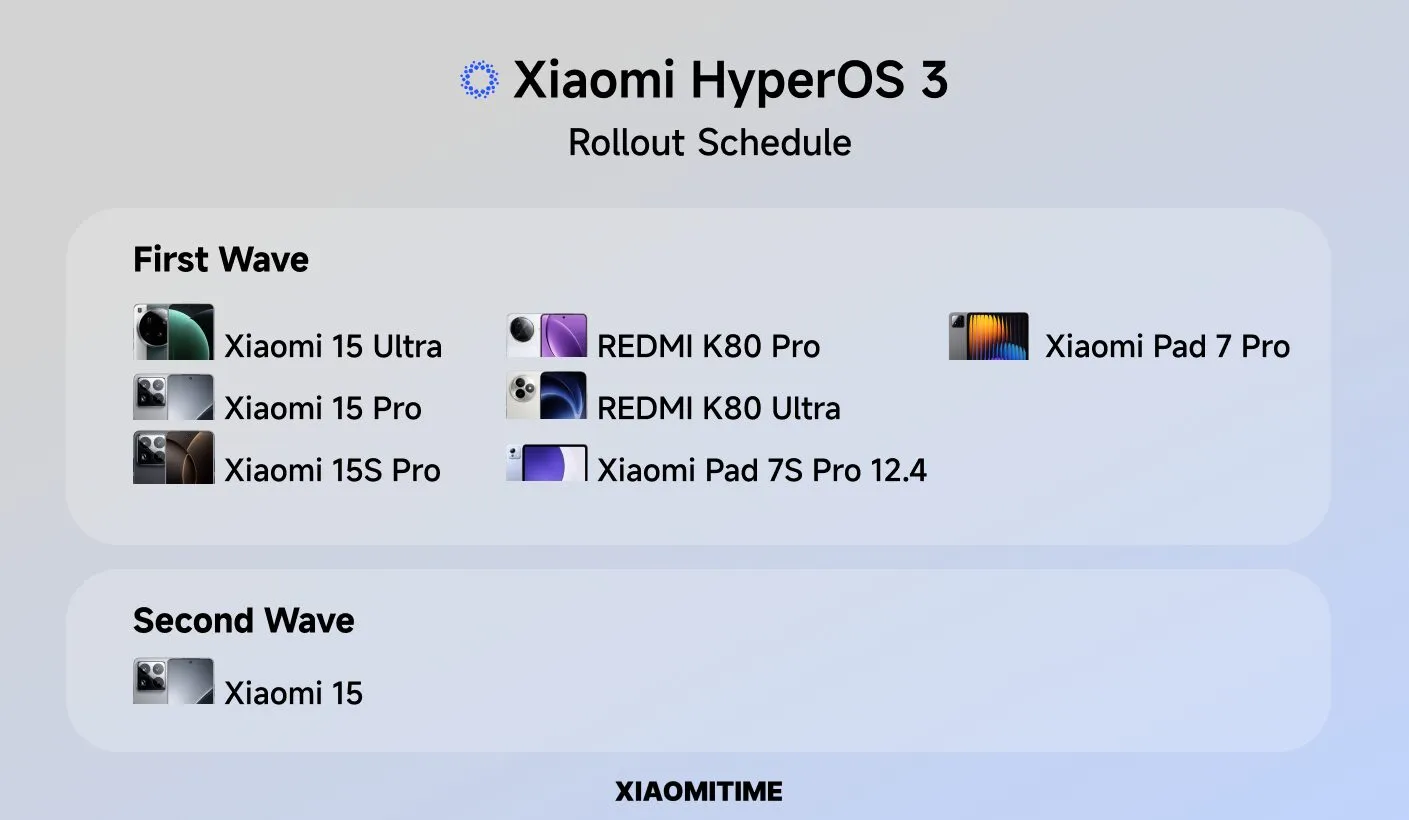
Ecosystem Expansion: Tablets, Watches, and TVs Joining the Update
On October 31, the Pad 7 Ultra emerges with HyperOS 3's split-screen multitasking, supporting up to four apps simultaneously on its 14-inch display, perfect for creators editing videos or professionals in virtual meetings. The Redmi K Pad complements budget users with similar productivity boosts, now with stylus support for note-taking enhanced by AI handwriting recognition.
Smartwatches like the Watch S4 series gain advanced health metrics, such as ECG and SpO2 monitoring, processed via on-device AI for instant insights without cloud dependency. The TV S Pro Mini LED 2025 series benefits from voice search refinements and personalized content recommendations, turning living rooms into smart entertainment hubs.
This interconnected rollout fosters a cohesive environment, where a phone update triggers compatible features across devices, like seamless file sharing or shared clipboard. For families, it means synchronized calendars and media libraries, streamlining daily routines.
Xiaomi 17 Series Launch: HyperOS 3 Native on New Flagships
Coinciding with the update buzz, the Xiaomi 17 series debuts on September 25, 2025, in China, featuring the 17, 17 Pro, and 17 Pro Max, all preloaded with HyperOS 3. The Pro Max variant teases a 200MP periscope camera and under-display fingerprint, optimized for the OS's computational photography, delivering studio-quality portraits effortlessly.
Powered by next-gen Snapdragon, these phones promise 16GB RAM baselines for buttery animations and AI companions that anticipate user needs, like auto-summarizing emails. Priced competitively, the series targets global expansion post-launch, with India and Europe eyeing Q4 availability.
The native integration skips beta phases, offering day-one stability and exclusive tweaks, such as customizable themes drawing from Android 16's Material You. This positions the 17 lineup as benchmarks for HyperOS 3's capabilities, influencing future updates.
Legacy Devices and Foldables: Ensuring Long-Term Support
November 15 marks a milestone for 2023 flagships, with the Xiaomi 14 Ultra receiving HyperOS 3's visual revamp, including redesigned icons and a sleeker status bar. The MIX Fold 4 foldable gains crease-minimizing software tweaks, enhancing its 7.98-inch inner display for tablet-like productivity.
The MIX Flip and Flip Pro follow, with dual-screen optimizations for gaming and reading, where AI adjusts refresh rates dynamically. By December, the 13 series enjoys security patches and minor UI polishes, while January 2026 revives the 12 series with essential features, underscoring Xiaomi's four-year update promise.
Foldables like the MIX Fold 2 benefit from hinge-aware gestures, making unfolds intuitive for quick notes or video calls. This support extends device lifespans, reducing e-waste and appealing to eco-conscious buyers.
New Features Spotlight: Super Island and Efficiency Gains
At HyperOS 3's core is Super Island, a persistent yet non-intrusive element that surfaces timely info, from flight delays to song lyrics, integrated into the notification shade. This elevates user engagement without overwhelming, especially on busy flagships like the 15 Pro.
System-wide, a 30 percent efficiency surge optimizes RAM management, allowing more background apps without throttling. Gaming sees 15 percent frame rate uplifts, with AI upscaling for smoother visuals on devices like the K80 Pro.
Redesigned icons adopt a more rounded, iOS-inspired aesthetic, while the status bar condenses info for cleaner views. Privacy bolsters include granular app permissions, aligning with Android 16's standards.
Global Rollout Expectations and Beta Insights
While China's timeline is firm, global users await details from the September 24, 2025, event alongside the 15T series. Betas, live since August 29 on eight devices, reveal robust stability, with testers praising the UI fluidity and AI accuracy.
International variants may adapt features for regional apps, like enhanced Google integration. Xiaomi's beta recruitment continues, inviting feedback to refine the global build.
For developers, HyperOS 3's APIs enable richer app ecosystems, from AR filters to smart home controls, broadening third-party compatibility.
User Preparation and Update Best Practices
To prepare, ensure 50 percent battery and stable Wi-Fi, backing up data via Mi Cloud. Post-update, recalibrate apps for new permissions, and monitor for optimizations in settings.
Xiaomi forums buzz with anticipation, sharing tips on customizing Super Island. This proactive approach maximizes the update's benefits, from extended battery to smarter automations.
Impact on Xiaomi's Market Position
HyperOS 3 bolsters Xiaomi's edge in value-driven tech, with timely updates fostering loyalty. Against Samsung's One UI, it offers bolder AI, potentially capturing more emerging market share.
The ecosystem push rivals Apple's, with cross-device fluidity driving upsells. Analysts forecast a 10 percent sales uplift post-rollout, cementing Xiaomi's innovation leadership.
Consumer Implications and Expectations
For users, HyperOS 3 promises a polished, intuitive experience, with Super Island streamlining notifications and AI enhancing daily tasks like photography and multitasking. The phased rollout minimizes bugs, ensuring reliability across Xiaomi’s diverse portfolio.
Social media on X, trending under #HyperOS3 and #Xiaomi17Launch, reflects excitement for the 17 series’ native integration and curiosity about foldable optimizations. Consumers expect seamless updates, with forums advising early backups to avoid data hiccups.
The update’s ecosystem focus could drive accessory sales, like styluses for pads or bands for health tracking, while competitive pricing keeps Xiaomi accessible, challenging premium brands in value-driven markets.
Comment / Reply From
No comments yet. Be the first to comment!
